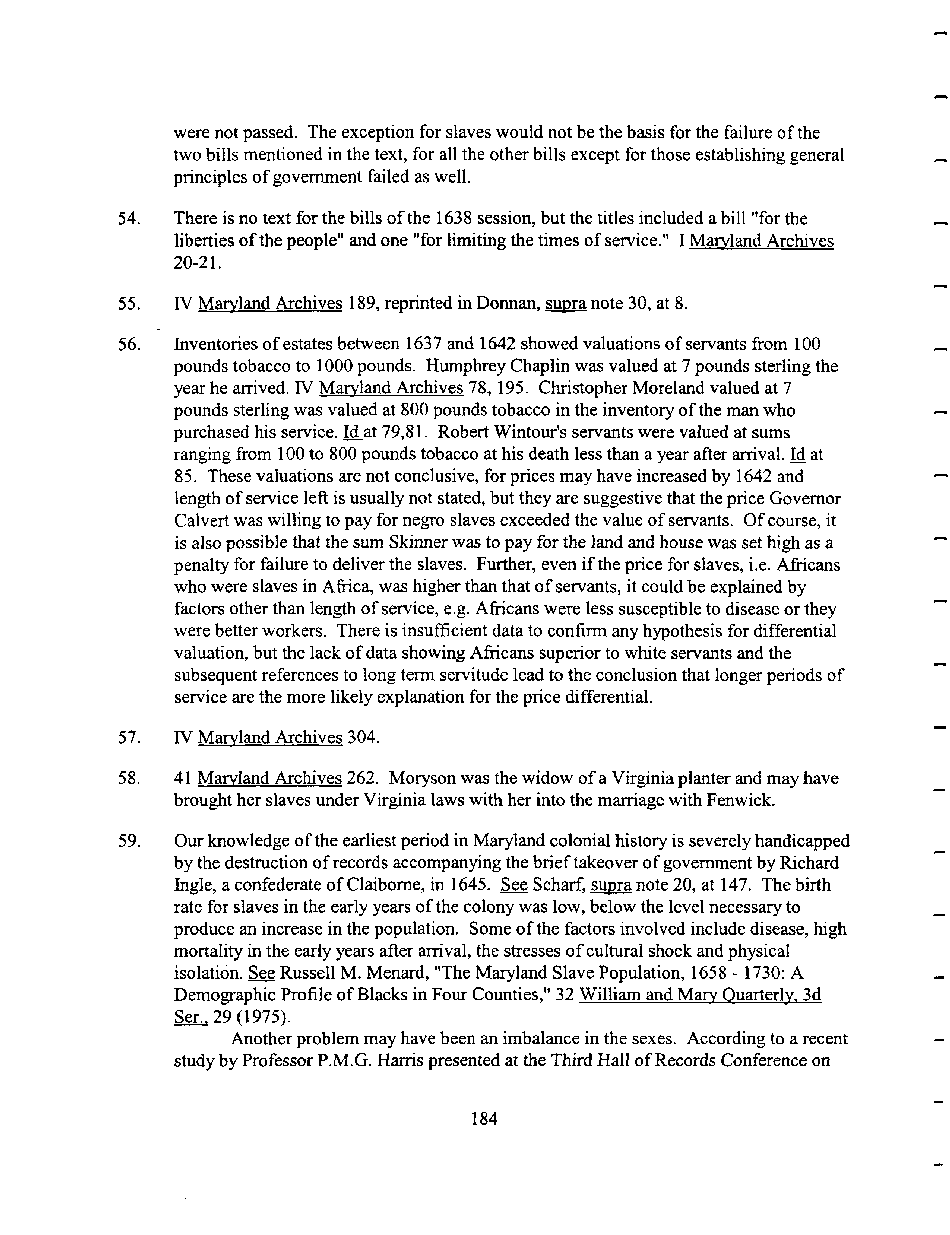|
were not passed. The exception for slaves would not be the basis for the failure of the
two bills mentioned in the text, for all the other bills except for those establishing general
principles of government failed as well.
54. There is no text for the bills of the 1638 session, but the titles included a bill "for the
liberties of the people" and one "for limiting the times of service." I Maryland Archives
20-21.
55. IV Maryland Archives 189, reprinted in Donnan, supra note 30, at 8.
56. Inventories of estates between 1637 and 1642 showed valuations of servants from 100
pounds tobacco to 1000 pounds. Humphrey Chaplin was valued at 7 pounds sterling the
year he arrived. IV Maryland Archives 78, 195. Christopher Moreland valued at 7
pounds sterling was valued at 800 pounds tobacco in the inventory of the man who
purchased his service. Id at 79,81. Robert Wintour's servants were valued at sums
ranging from 100 to 800 pounds tobacco at his death less than a year after arrival. Id at
85. These valuations are not conclusive, for prices may have increased by 1642 and
length of service left is usually not stated, but they are suggestive that the price Governor
Calvert was willing to pay for negro slaves exceeded the value of servants. Of course, it
is also possible that the sum Skinner was to pay for the land and house was set high as a
penalty for failure to deliver the slaves. Further, even if the price for slaves, i.e. Africans
who were slaves in Africa, was higher than that of servants, it could be explained by
factors other than length of service, e.g. Africans were less susceptible to disease or they
were better workers. There is insufficient data to confirm any hypothesis for differential
valuation, but the lack of data showing Africans superior to white servants and the
subsequent references to long term servitude lead to the conclusion that longer periods of
service are the more likely explanation for the price differential.
57. IV Maryland Archives 304.
58. 41 Maryland Archives 262. Moryson was the widow of a Virginia planter and may have
brought her slaves under Virginia laws with her into the marriage with Fenwick.
59. Our knowledge of the earliest period in Maryland colonial history is severely handicapped
by the destruction of records accompanying the brief takeover of government by Richard
Ingle, a confederate of Claiborne, in 1645. See Scharf, supra note 20, at 147. The birth
rate for slaves in the early years of the colony was low, below the level necessary to
produce an increase in the population. Some of the factors involved include disease, high
mortality in the early years after arrival, the stresses of cultural shock and physical
isolation. See Russell M. Menard, "The Maryland Slave Population, 1658 - 1730: A
Demographic Profile of Blacks in Four Counties," 32 William and Mary Quarterly. 3d
Ser.. 29 (1975).
Another problem may have been an imbalance in the sexes. According to a recent
study by Professor P.M.G. Harris presented at the Third Hall of Records Conference on
184
�
|

